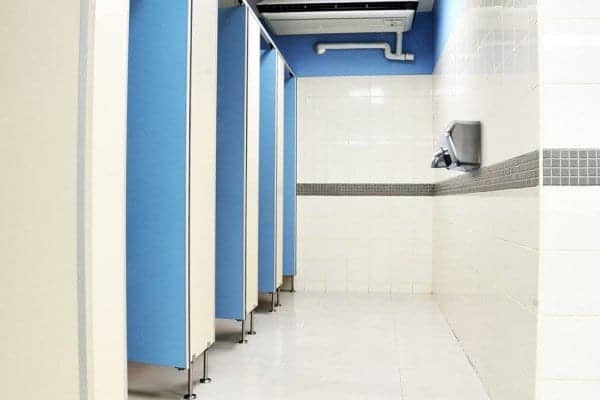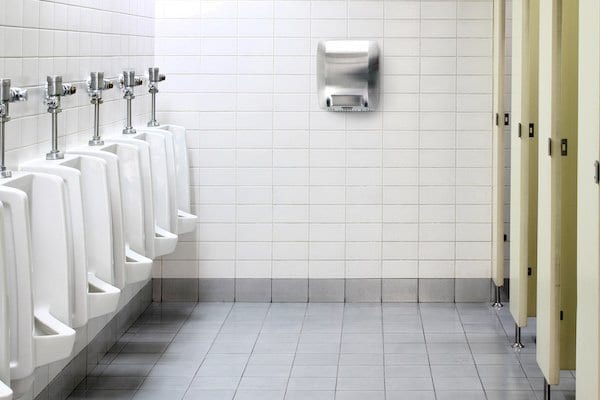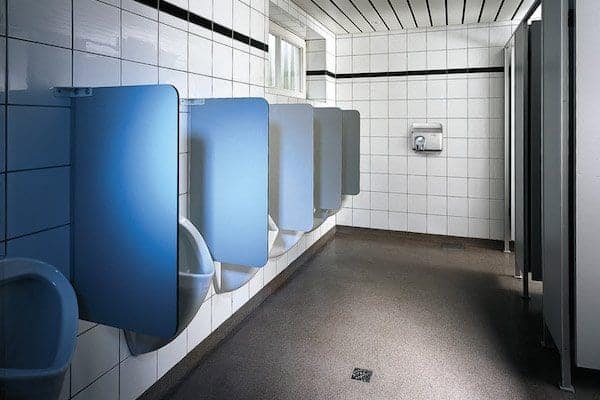Chicago based inventor George Clemens created the very first commercial hand dryer back in 1948 – and for a long time the design stayed more-or-less the same. We had to wait until 1992 for the first innovations on the design, when Mitsubishi introduced the Jet Hand Dryer, followed by Dyson’s ground-breaking Jet Airblade Dryer.
The hygienic choice
One drawback with the original design was the on/off button; you’ll still see it on older and more cheaply made hand dryers today.
So one of the most important advances for Jet hand dryers has been the installation of sensors that automatically detect the user’s hands and begin the drying process automatically. Now there’s no more need to press buttons and no risk of spreading microorganisms.
Even in the nineteen forties, there were concerns about depleting our natural resources. Commercial warm air driers were launched as an alternative to paper towels – which at the time were made from the pulp of trees from non-sustainable sources. There were other advantages too; whereas paper towels ran out and would have to be replenished the next day, hand driers were available 24/7.
But there was a problem. Yes, hand dryers could eradicate the use of paper towels in theory, but because they took 30 seconds or more to dry users’ hands they were uneconomical. They were exceptionally noisy too. So, unsurprisingly, many people preferred to go on using paper towels.
The hand dryer was a great tool, but it needed a bit of fine tuning…
Improving the basic hand dryer
Improvements to the motors and fans helped create a much quieter washroom experience and reduce drying time. Very few people were prepared to hang around for 30 seconds or more to dry their hands. Imagine waiting that long today! Instead they tended to abandon the drying process part way through and walked away – dissatisfied and still damp. The improved drying time put an end to users furiously wiping away the remaining moisture on their trousers and jackets and helped make hand dryers a much more popular option.
However, it was then discovered that the use of very warm hand driers enabled bacteria to spread around the washroom much more easily. So again, the fans needed to be improved to reduce the temperature and distribution, helping to confine bacteria to area immediately around the hand dryer, rather than showering unsuspecting passers-by.
Early commercial hand driers were operated through the use of touch buttons and typically ran for a set period of time, normally 30 seconds. Not only did this mean that the hand dryer was often left running after use, but it meant that microbes and microorganisms were spread via the buttons. Later, World put a stop to this when they introduced an automatic hand dryer which could sense a person’s hands and turn on and off accordingly. No more need for buttons!
The modern hand dryer
Modern hand dryers are quieter, faster and more cost efficient. They’re more eco-friendly than ever before.
Even dryers in a relatively low price bracket can dry hands in 15 seconds or less. While more advanced models, like the innovative Tekflo® Advanced model cut drying time to just nine seconds! We mentioned that dryers are getting quieter too. At only 70dB, the Tekflo® Advanced is among the quietest dryers ever made. The result is a quick, enjoyable hand drying experience for the user and an eco-friendly solution for the establishment owner.
I believe we can learn a lot from history. We’ve seen that as technology has improved, hand dryers have become more “usable”. The actual hand drying process has driven developments, bringing us to a point where today’s best hand dryers are finally fulfilling the promise of George Clemens’s original design.
Technology will go on improving. So we’ll endeavour to go on learning and developing to strike the right balance between effective, reliable products at a price point that is as competitive as possible.
All our hand dryer products are high speed, hygienic, environmentally friendly, and vandal resistant, while still being affordable.



